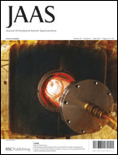
JOURNAL OF ANALYTICAL ATOMIC SPECTROMETRY
Scope & Guideline
Transforming Data into Discoveries in Analytical Science.
Introduction
Aims and Scopes
- Atomic Spectrometry Techniques:
The journal emphasizes the development and application of various atomic spectrometry techniques, including inductively coupled plasma mass spectrometry (ICP-MS), laser-induced breakdown spectroscopy (LIBS), and optical emission spectrometry (OES). These techniques are foundational in elemental analysis and isotopic measurements. - Environmental and Biological Applications:
A core focus is on the analysis of environmental samples, including soil, water, and air, as well as biological samples such as tissues and fluids. This highlights the journal's commitment to addressing environmental and health-related issues through analytical chemistry. - Isotope Analysis and Geochronology:
The journal frequently publishes research on isotopic analysis, particularly in geochronology. This includes U-Pb dating and the analysis of trace elements in geological samples, showcasing its contribution to earth sciences. - Methodological Innovations:
There is a strong emphasis on methodological innovations, such as improvements in sample preparation techniques, calibration methods, and data processing strategies. This focus aims to enhance the accuracy and precision of analytical results. - Machine Learning and Data Analysis:
Recent publications indicate a growing trend towards the integration of machine learning and advanced statistical methods in data analysis for atomic spectrometry, enhancing the interpretation of complex datasets.
Trending and Emerging
- Nanoparticle Analysis:
There is a rising trend in the analysis of nanoparticles, particularly concerning their environmental impact and potential applications in various fields, including medicine and materials science. This encompasses techniques such as single particle ICP-MS. - Machine Learning Integration:
The integration of machine learning algorithms into analytical methods is increasingly prevalent. Researchers are utilizing these techniques to enhance data analysis, improve predictive capabilities, and optimize experimental conditions. - Sustainable and Green Chemistry:
Publications focusing on sustainable analytical methods, including eco-friendly sample preparation and analysis techniques, are gaining traction. This aligns with global efforts to promote environmentally responsible research practices. - Advanced Isotopic Techniques:
The journal is witnessing a surge in studies employing advanced isotopic techniques, particularly in environmental and geological contexts. This trend underscores the importance of isotopic analysis in understanding complex systems. - Real-time and In Situ Analysis:
There is a growing emphasis on methods that allow for real-time or in situ analysis of samples, reflecting the need for immediate results in various applications, including environmental monitoring and industrial processes.
Declining or Waning
- Traditional Spectroscopic Techniques:
There is a noticeable decrease in publications centered around traditional spectroscopic techniques that do not incorporate recent advancements or hybrid methods. This suggests a shift towards more innovative and integrated approaches. - Basic Elemental Analysis:
Research focused solely on basic elemental analysis without the incorporation of isotopic or advanced analytical techniques appears to be waning. The trend is moving towards comprehensive studies that involve complex matrices and multi-element analyses. - Static Sampling Methods:
Static sampling methods that do not leverage modern automation or real-time analysis techniques are being published less frequently. The journal is increasingly highlighting dynamic and in situ methods that provide real-time data.
Similar Journals
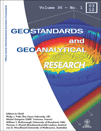
GEOSTANDARDS AND GEOANALYTICAL RESEARCH
Unveiling Earth’s Secrets through Standardized MethodologiesGEOSTANDARDS AND GEOANALYTICAL RESEARCH, an esteemed journal published by WILEY, focuses on advancing the fields of geology and geochemistry through innovative research and thorough analytical techniques. With an impressive impact factor rooted in its Q1 and Q2 rankings in the categories of geology, and geochemistry and petrology respectively, the journal is recognized for its high-quality contributions to the scientific community, as evidenced by its high standing in Scopus rankings—positioned at #33 in Earth and Planetary Sciences Geology and #28 in Geochemistry and Petrology. Covering a wide scope of subjects relevant to both professionals and researchers, this peer-reviewed journal serves as an essential platform for disseminating cutting-edge methodologies and standardized practices in geoanalytical research. With access options designed to facilitate wide readership, this journal not only enhances the visibility of scholarly work but also drives key discussions on the significance of geoanalytical methods in understanding geological phenomena.
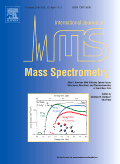
INTERNATIONAL JOURNAL OF MASS SPECTROMETRY
Exploring Innovations in Analytical ChemistryINTERNATIONAL JOURNAL OF MASS SPECTROMETRY, published by Elsevier, is a pivotal platform in the field of mass spectrometry, advancing the understanding and application of this essential analytical technique. With an ISSN of 1387-3806 and an E-ISSN of 1873-2798, the journal has established its significance since its inception in 1998 and continues to contribute valuable insights to the scientific community through its convergence of knowledge extending to 2024. Its scope encompasses critical areas such as condensed matter physics, instrumentation, physical and theoretical chemistry, and spectroscopy, earning recognition across various ranks and quartiles, specifically holding a Q3 classification in multiple categories for 2023. Although it does not currently operate under an open access model, the journal remains an essential resource for researchers, professionals, and students striving to deepen their expertise and stay abreast of the latest methodological developments and discoveries in mass spectrometry. With its commitment to quality and innovation, the INTERNATIONAL JOURNAL OF MASS SPECTROMETRY plays a crucial role in supporting advancements in analytical chemistry and instrumental analysis.

SPECTROSCOPY
Illuminating Innovations in Spectroscopy and BeyondSPECTROSCOPY is a vital peer-reviewed journal published by MJH Life Sciences, dedicated to advancing the field of spectroscopy and its applications across various disciplines including analytical chemistry, atomic and molecular physics, and optics. Established with a vision to disseminate cutting-edge research, the journal has a broad scope that encompasses the latest developments, methodologies, and technologies in spectroscopy. Although positioned in the Q4 quartiles for its categories as of 2023, it remains an important resource for researchers and students alike, providing insights into emerging trends and challenges in the field. Issues are published regularly, facilitating knowledge exchange and collaboration among professionals. With access options available in traditional formats, SPECTROSCOPY strives to reach a diverse audience, underscoring its relevance and necessity in today’s ever-evolving scientific landscape. For those in pursuit of innovative solutions and comprehensive analyses in spectroscopy, this journal serves as an indispensable platform.
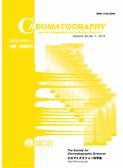
Chromatography
Unveiling breakthroughs in chromatography for a sustainable future.Chromatography is an esteemed journal published by the SOC CHROMATOGRAPHIC SCIENCES, dedicated to advancing the field of chromatographic techniques and their applications across various disciplines, including analytical chemistry, biochemistry, and environmental science. By facilitating the exchange of high-quality research, Chromatography plays a pivotal role in enhancing methodologies and technologies that drive innovation in sample analysis. While the journal is not currently open access, it maintains a rigorous peer-review process, ensuring the publication of valuable and impactful studies. Researchers, professionals, and students alike can benefit from its comprehensive coverage of chromatography-related advancements, making it a vital resource for anyone engaged in this dynamic area of study.

JOURNAL OF ANALYTICAL CHEMISTRY
Unveiling Breakthroughs in Instrumentation and ApplicationsJOURNAL OF ANALYTICAL CHEMISTRY, published by PLEIADES PUBLISHING INC, stands as a pivotal resource in the field of analytical chemistry, offering an innovative platform for researchers, professionals, and students to advance their knowledge and contribute to the discourse within the discipline. With an ISSN of 1061-9348 and an E-ISSN of 1608-3199, this journal features a focused exploration of analytical methodologies, instrumentation developments, and applications across various domains, contributing to practical and theoretical advancements in the field. Currently ranked in the Q3 category in Analytical Chemistry with a Scopus rank of #111 out of 156, it provides critical insights and innovation strategies for professionals aiming to enhance their analytical capabilities. Access to the journal is through standard subscription models, and it covers an extensive range of topics pertinent to the discipline from 1996 to 2024. Engage with the JOURNAL OF ANALYTICAL CHEMISTRY to be part of a vibrant research community dedicated to push the boundaries of analytical practices.

Journal of Chemical Metrology
Bridging Gaps in Quantitative Analysis and InnovationJournal of Chemical Metrology is a vital resource in the evolving fields of Analytical Chemistry, Electrochemistry, Spectroscopy, and Toxicology, published by ACG PUBLICATIONS in Turkey. With a focus on advancing the understanding and application of chemical metrology, this journal aims to bridge gaps in quantitative analysis, offering researchers and professionals a platform to disseminate groundbreaking studies and methodologies. Although it operates under a traditional access model, readers can benefit from its insights as the journal continues to gain recognition with its 2023 rankings placing it in the Q3 and Q4 categories across various scientific disciplines. From its inception in 2019 to its projected convergence in 2024, the journal has been instrumental in fostering collaboration and innovation in chemical sciences, making it an essential tool for students and researchers dedicated to enhancing analytical techniques and ensuring safety through effective toxicological assessments.
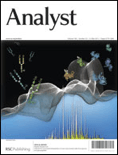
ANALYST
Empowering Innovation in Chemistry and BeyondANALYST, published by the Royal Society of Chemistry, stands as a prestigious journal in the fields of Analytical Chemistry, Biochemistry, Electrochemistry, Environmental Chemistry, and Spectroscopy. Esteemed for its rigorous peer-review process and influential contributions to the advancement of scientific knowledge, the journal has been a vital resource for researchers and professionals since its inception in 1876. With an impressive Scopus ranking that places it in the top quartile for several chemical disciplines, it specifically ranks #12 in Spectroscopy and #31 in Analytical Chemistry, reflecting its robustness and relevance in the analytical sciences. Though currently not an Open Access publication, ANALYST provides valuable insights and cutting-edge research that help drive innovation and discovery in various scientific realms. Researchers and students alike will benefit from its commitment to disseminating high-quality research that addresses contemporary challenges and promotes interdisciplinary collaboration.
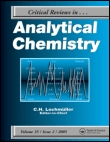
CRITICAL REVIEWS IN ANALYTICAL CHEMISTRY
Pioneering the Path of Analytical Chemistry Excellence.Critical Reviews in Analytical Chemistry, published by Taylor & Francis Inc, stands as a pivotal journal in the field of analytical chemistry, contributing significantly to its advancement since its inception in 1989. With an impressive Q1 ranking in the 2023 analytical chemistry category, it positions itself among the top 15 journals in the field, reflecting its high impact and relevance, as evidenced by a 90th percentile Scopus rank. This esteemed journal is dedicated to publishing comprehensive reviews that synthesize current research and emerging methods in analytical techniques, making it an invaluable resource for researchers, professionals, and students alike. With the goal of fostering innovation and collaboration, Critical Reviews in Analytical Chemistry continues to address challenges and breakthroughs within the sphere of analytical methodologies, ensuring its authors and readers remain at the forefront of scientific discovery.

Chinese Journal of Chromatography
Transforming Challenges into Solutions through ChromatographyChinese Journal of Chromatography, published by SCIENCE PRESS, is a dedicated platform for disseminating pioneering research in the fields of Analytical Chemistry, Biochemistry, and Organic Chemistry. Established in 1997, this esteemed journal offers invaluable insights into chromatographic techniques and their applications, showcasing studies that contribute to the advancement of chemical engineering and electrochemistry. Although it currently holds a Q4 ranking in several categories, the journal aims to foster growth and knowledge among researchers, professionals, and students alike. With a continuous publication window extending until 2024, the Chinese Journal of Chromatography invites submissions that not only enhance scientific understanding but also address real-world challenges through innovative chromatographic solutions. Researchers looking for a collaborative community will find this journal a vital resource in their ongoing academic endeavors.

SPECTROSCOPY LETTERS
Pioneering Insights in Optics and Molecular StudiesSPECTROSCOPY LETTERS, published by Taylor & Francis Inc, is a pivotal journal that plays a significant role in the fields of Analytical Chemistry, Atomic and Molecular Physics, and Optics. With an ISSN of 0038-7010 and E-ISSN of 1532-2289, it provides a platform for the dissemination of cutting-edge research and developments in spectroscopy and its wide-ranging applications. As of 2023, the journal is ranked in the third quartile (Q3) across its relevant categories, reflecting its importance in these scientific domains. The journal has a continuous publication history from 1968 to 2024, establishing a rich legacy in academic literature. Although it currently does not offer Open Access options, SPECTROSCOPY LETTERS remains a valuable resource for researchers, professionals, and students seeking to advance their knowledge and applications in spectroscopy. For those in the arena of physics and chemistry, this journal is essential for keeping abreast of the latest findings and methodologies in the field.